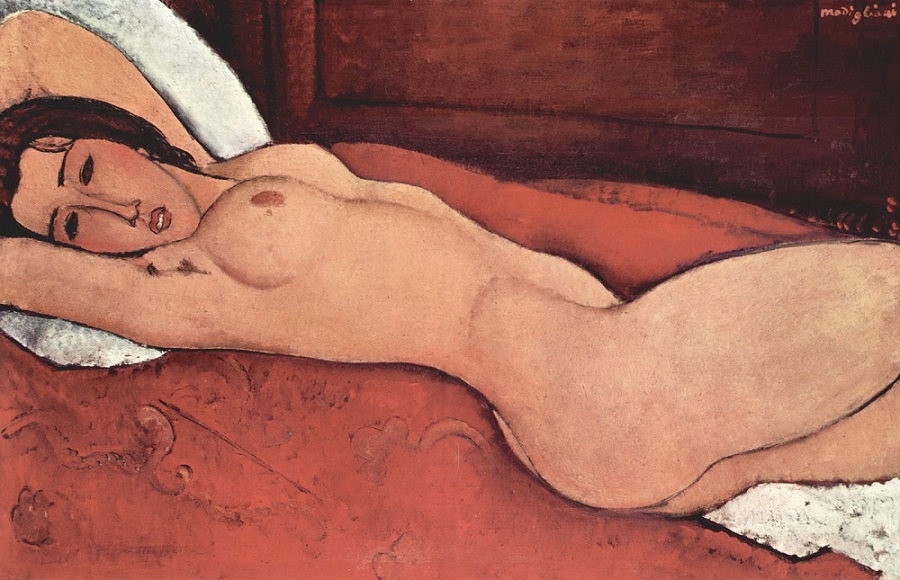This painting is from the year 1917 and embodies many of the techniques of style he had recently adopted; the model in the painting appears to be stretching in such a way she engulfs the canvas with her exaggerated feminine form.
The painting is crafted in such a way that we see the model from above, close-up with an emphasis on her facial features, breasts and hips. The hands and feet are intentionally left out of the frame, during more of the viewers' attention to torso sprawled out in a provocative manner.
Her pale, snow-white skin can be seen to contrast against intense passionate red of the bed on which she rests. The use of white and red is often used symbolically to represent innocent virginity and fertility. This piece of work is signed on the upper right quadrant with Modigliani's signature.
Modigliani's painting seems to overtly vary itself from Renaissance depictions of women such as Venus, as despite the subject in question appears seductive, whilst expressing gloom and sorrow through her face.
Moreover, the mythological style of painting is abandoned in place of erotically presenting this reclining nude without fabled justification; the model is presented in such a way, that the eroticism yields its own purpose needless of rationalisation.
It was in the year 1916 where his series of paintings know as reclining nudes are known to have started. Much like many of his other works, 'Reclining Nude' is characterised by distortions of Renaissance imagery of idealistic women.
Common ways, in which Modigliani expressed his famously unique style, is by the elongation of the face and other bodily features such as the torso and occasionally breasts.
The common themes found within his paintings can be denoted from his young suffering hellishly from pleurisy and later developing tuberculosis; a death sentence in the time of Modigliani's life, that he was very much aware of, and did indeed claim him.
In addition to his lung ailments, he was prone to typhoid fevers, which often sent him into a state of delirium. Allover, he was a risk-taker and self-destructive individual; love for wine became an addiction to absinthe and his sexual affairs are infamous. This painting shows that creative genius may indeed manifest from a man of chaos.




